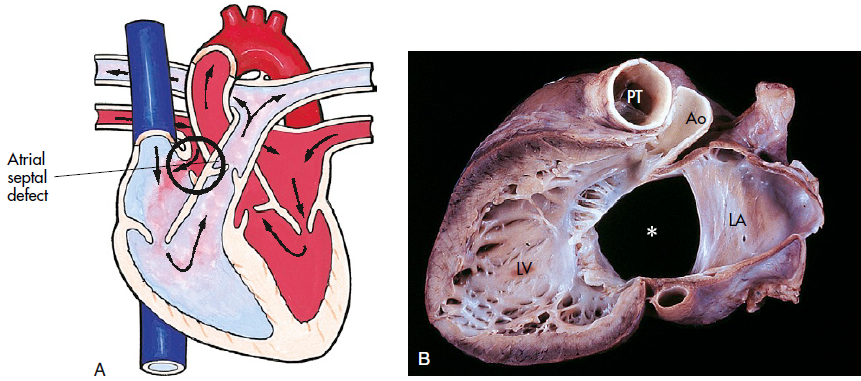Congenital Heart Disease
Content of This Page
1- Introduction
2- Causes
3- Symptoms
4- Anomalies Associated With Congenital Heart Disease
5- Treatment
Introduction
Congenital Heart Disease (CHD) refers to a group of heart defects present at birth. These abnormalities can affect the heart’s structure and function, such as holes in the heart, narrowed or leaky valves, or malformed arteries.

Causes
Genetic Factors: Inherited genetic mutations or chromosomal abnormalities, such as Down syndrome or Turner syndrome, can contribute to CHD.
Family History: A family history of heart defects or genetic conditions increases the risk of CHD.
Environmental Factors:
- Maternal Infections: Infections like rubella during pregnancy can affect fetal heart development.
- Maternal Health Conditions: Conditions such as diabetes, lupus, or phenylketonuria (PKU) can increase the risk.
- Exposure to Drugs and Alcohol: Use of certain medications, drugs, or alcohol during pregnancy can affect fetal heart development.
Maternal Age: Advanced maternal age can be a risk factor for CHD.
Nutritional Deficiencies: Lack of certain nutrients, such as folic acid, may increase the risk of CHD.
Exposure to Toxins: Environmental toxins or certain chemicals during pregnancy can potentially impact heart development.
Symptoms
- Cyanosis: Bluish tint to the skin, lips, or nails due to low oxygen levels in the blood.
- Difficulty Breathing: Rapid or labored breathing, especially during feeding or physical activity.
- Poor Feeding and Growth: Difficulty feeding, poor weight gain, or slow growth in infants.
- Fatigue: Excessive tiredness or lethargy, particularly after activity.
- Swelling: Swelling in the legs, abdomen, or around the eyes.
- Heart Murmurs: Abnormal heart sounds detected by a doctor during a physical examination.
- Frequent Respiratory Infections: Recurrent pneumonia or bronchitis.
- Rapid Heart Rate: An unusually fast or irregular heartbeat.
- Chest Pain: Discomfort or pain in the chest, more common in older children and adults.

Anomalies Associated With Congenital Heart Disease
1. Atrial Septal Defect (ASD)
- Description: A hole in the wall (septum) between the heart’s upper chambers (atria).
- Effect: Allows blood to flow between the atria.
2. Ventricular Septal Defect (VSD)
- Description: A hole in the wall between the heart’s lower chambers (ventricles).
- Effect: Allows blood to flow between the ventricles.
3. Patent Ductus Arteriosus (PDA)
- Description: A persistent opening between the aorta and pulmonary artery that should close after birth.
- Effect: Allows blood to bypass the lungs and flow back into the aorta.
4. Tetralogy of Fallot (ToF)
- Description: A combination of four heart defects: ventricular septal defect (VSD), pulmonary stenosis, right ventricular hypertrophy, and an overriding aorta.
- Effect: Decreased oxygenated blood flow to the body.
5. Transposition of the Great Arteries (TGA)
- Description: The aorta and pulmonary artery are switched, causing oxygen-poor blood to flow to the body and oxygen-rich blood to flow to the lungs.
- Effect: Oxygen-poor blood circulates through the body.
6. Coarctation of the Aorta
- Description: A narrowing of the aorta that restricts blood flow.
- Effect: Increased blood pressure before the narrowing and decreased blood flow beyond it.
7. Pulmonary Stenosis
- Description: Narrowing of the outflow tract from the right ventricle to the pulmonary artery.
- Effect: Obstructs blood flow from the right ventricle to the lungs.
8. Aortic Stenosis
- Description: Narrowing of the aortic valve, which impedes blood flow from the left ventricle to the aorta.
- Effect: Obstructs blood flow to the body.
9. Tricuspid Atresia
- Description: The tricuspid valve is absent or malformed, affecting blood flow from the right atrium to the right ventricle.
- Effect: Affects the heart’s ability to pump blood to the lungs.
Treatment
1. Medications
- Purpose: To manage symptoms and support heart function.
- Types: Diuretics to reduce fluid buildup, ACE inhibitors to lower blood pressure, and medications to help with heart rhythm or blood thinning.
2. Surgical Procedures
- Purpose: To repair or correct the heart defect.
- Types:
- Septal Repair: For atrial or ventricular septal defects.
- Valve Repair or Replacement: For defects involving heart valves.
- PDA Closure: To close a patent ductus arteriosus.
- Corrective Surgery: For complex conditions like Tetralogy of Fallot or Transposition of the Great Arteries.
3. Catheter-Based Procedures
- Purpose: To treat some defects using minimally invasive techniques.
- Types:
- Balloon Angioplasty: To widen narrowed vessels or valves.
- Device Closure: To close holes such as atrial septal defects using a catheter.
4. Lifestyle and Supportive Care
- Purpose: To support overall health and well-being.
- Recommendations:
- Healthy Diet: To support heart health.
- Regular Exercise: As advised by a healthcare provider.
- Regular Follow-Up: Monitoring heart function and development.
5. Long-Term Management
- Purpose: To manage ongoing care and monitor for potential complications.
- Includes:
- Routine Check-Ups: With a cardiologist.
- Echocardiograms and Other Tests: To assess heart function.
6. Heart Transplant
- Purpose: For severe cases where other treatments are not effective.
- Type: Replacement of the damaged heart with a donor heart.